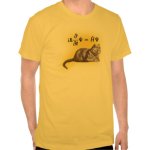No, the many-worlds interpretation says that nothing special happens at the moment of measurement, unlike the Copenhagen interpretation which postulates a "collapse" on measurement distinct from the normal deterministic equation for wavefunction evolution. Opening the box just means the outside observer becomes entangled with the system in the box, in the way that would be predicted by the standard deterministic equations of QM during any interaction between quantum systems (in the context of the Copenhagen interpretation, this is what happens with interactions that take place
between measurements, so they don't involve any collapse--the many-worlds interpretation just says 'measurement' is no different from any other quantum interaction).
A major problem created would be that the idea would have the entire mass and energy of the universe created for every quantum event - the creation of that new parallel universe. This is a serious violation of conversation of mass and energy. How does this happen?
There are no parallel universes "created" at any distinct moments. There's just a single universal wavefunction, evolving deterministically according to the Schroedinger equation, which contains a superposition of very different position states (like "living cat" and "dead cat"). In QM energy conservation for an evolving wavefunction is expressed in terms of the idea that the expectation value for energy doesn't change from one moment to the next, and this would be true of the universal wavefunction too.
Here's good article on the many-worlds (or Everett) interpretation, and how it doesn't actually start from the premise of "parallel universes" but just from assuming the deterministic equation governing wavefunction evolution applies at all times:
http://www.preposterousuniverse.com...y-worlds-interpretation-of-quantum-mechanics/



